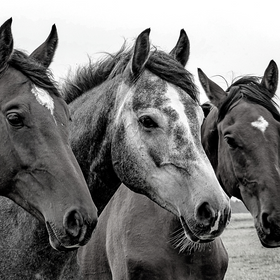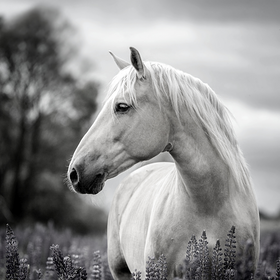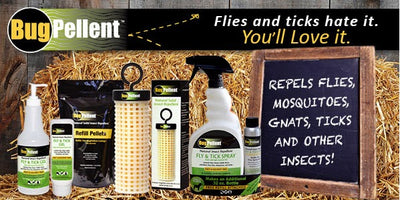
Most Common Poisonous Plants for Horses
There are hundreds of poisonous plants in North America and most are very common. Toxicity in horses can be dangerous and even life threatening if not identified and treated quickly. Luckily most of these plants are not attractive to horses due to their bitter taste. In some cases a horse would need to eat a large quantity to feel the effects. Learning to identify and remove potentially toxic plants from your pastures will help save you stress and an expensive vet trip in the future. Always make sure to check your pastures after storms or strong wind as many of these plants can blow right into your pastures.
Bracken Fern
Bracken ferns, when eaten, will inhibit the absorption of thiamin which can lead to neurological issues. Small amounts of this plant have pretty low levels of toxins, but some horses seem to really like this plant. A horse that eats large quantities of bracken fern might show signs of depression, lack of balance and blindness. Large doses of thiamin can help with recovery if discovered and treated before the neurological damage is too severe.
Hemlock
The entire hemlock plant contains multiple neurotoxins that will attack the nervous system. Most horses will not eat this plant, luckily, because about four pounds is a lethal dose for most horses. If horses do eat hemlock, the symptoms will appear within an hour, first with tremors, then depression, respiratory issues and often colic. Supportive care can be given to horses that have eaten a small amount. There is no treatment for ingesting large amounts of hemlock.
Tansy Ragwort
There are many variations of tansy ragwort, but all contain toxins that will inhibit cell division, especially in the liver. Liver damage is not reversible once it occurs. Most horses will eat ragwort over time causing chronic exposure which is ultimately fatal. It is difficult to determine when horses are eating ragwort until signs of liver failure appear.
Johnsongrass
Johnsongrass contains cyanide in the leaves and stem. Cyanide prevents the body from absorbing oxygen and is present in higher doses in young plants. It is thought that small amounts of fully mature plants will not harm horses. Fully dried plants are not harmful. Horses that have eaten young plants will show signs of respiratory distress and convulsions. Supportive care can help a horse recover if small amounts of the plant were ingested.
Oleander
You’ll see oleander commonly used for landscaping in hot climates. All parts of this plant are toxic and cause heart issues. The leaves are still toxic after drying and it does not have to be eaten in large quantities to become fatal. Horses that have eaten oleander will show colic symptoms, irregular heart rate and respiratory issues. Activated charcoal can be given to help prevent further absorption of the toxins if given early.
Red Maple Trees
Red maple leaves are completely safe if they are eaten fresh, but become very toxic to horses once they wilt. The toxins in wilted maple leaves will cause organ damage fairly quickly after ingestion. One pound of leaves can be fatal for most horses. Horses that ingest wilted maple leaves will be lethargic, refuse to eat, have rapid heart and respiratory rates and pale gums. Large amounts of IV fluids can aid in recovery, but recovery is dependent on how quickly after ingestion the treatment begins.





